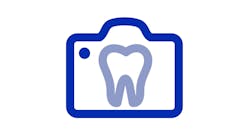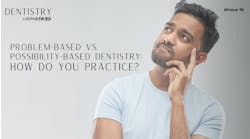The emergence of the dental practice management company
by Thomas A. Climo, PhD
For more on this topic, go to www.dentaleconomics.com and search using the following key words: dental practice management company, dental service delivery, Thomas Climo.
The American Dental Association has published an annual “Survey of Dental Practice” since the 1950s. Not until the ADA's forthcoming 2009 publication “Survey of Large Dental Group Practices” will any alternative to a sole practitioner office have been subjected to ADA review.
In some respect, the ADA can be forgiven this oversight. After all, as of 2006, dentists using their dental degree in some fashion other than as an active private practitioner in the United States comprised only 8% of the dental population. It sounds comprehensive to account for 92% of the means for delivering dental services in the United States.
It is for that reason the forthcoming 2009 publication takes on greater significance. There must be a movement afoot, a trend if you will, that has led the ADA to consider an alternative to the usual means of delivering dental services, and that this alternative must be making the industry stand up and take notice.
This report will canvass the current market conditions of the dental service industry, highlighting why the sole practitioner office is now meeting a challenge from larger group, centralized managed dental centers.
• Sole practitioner office
It is extremely capital intensive to open a dental practice, and operating costs are high. If there is only 25% to 35% of revenues left to reward the sole practitioner from distributions ($18,000 per month) while holding working capital constant at $40,000 to $60,000, plus holding back a suitable 5% to 7% reserve for depreciation and replacement of old equipment with new, the sole practitioner is generating a little under $600,000 of revenue without showing much of a profit.
[Distributions to himself/herself in the form of salary cannot be considered “profit,” otherwise the sole practitioner is working for nothing. Distributions beyond salary would be considered “profit,” but, at $600,000 per annum of revenues, the typical sole practitioner office won't have a lot of that to go around, possibly enough to reward himself/herself and staff a modest holiday bonus.]
And don't think we are being conservative in this projection of sole practitioner revenue. For a dentist in a private practice, the ADA 2002 Survey of Dental Practice estimates adjusted net income of $183,050, practice expense of $295,890, and a total nominal income of $532,850. Let's lay this out and see what is left:
Total Nominal Income $ 532,850
Less Practice Expense $ 295,890 Total Disbursable Income $ 236,960
Less Owner Salary $ 183,050 Net Disbursable Income $ 53,910
Put $10,000 of the net disbursable income into topping off the working capital, set aside another $35,000 for capital replacement reserves (at 7%), and the sole practitioner has a whopping eight or nine grand to share with himself/herself and staff associates for a holiday bonus. Shake out these numbers any way you like, and you cannot turn around the salient fact that far too much capital goes into generating too little revenue for the sole practitioner dental office to be considered anything other than a means of income for the dentist.
At a 1.1% return on capital investment (of $500,000), the sole practitioner office is not set, nor framed to become, an investment vehicle that performs favorably when judged against other endeavors with similar capital costs that either drive down operating expenses or increase revenue in order to be competitive in their respective markets.
The sole practitioner dental office is a professional business with an outstanding record of debt servicing, but also one with an abysmally low return on capital investment. If it were up to an outside Board to determine how much to invest in a dental practice when judged against other available endeavors, capital to dentistry would go wanting. For that reason, dentists buy and sell from fellow dentists, and the merry–go–round of high capital and high operating costs with low margin of returns continues.
• Larger dental group practices
When faced with the kind of circumstances and results from above for any kind of business in any kind of industry, economists counsel the quick and immediate adoption of a competing business model rather than one of convenience for the practicing professional.
If capital costs are high, develop a scenario that reduces capital costs. If operating costs are high, develop a management model that reduces these costs. If profit margins are low, while keeping operating costs low, develop a marketing program that will increase revenues.
This is the business model behind larger dental group practices, or what is now being referred to as Dental Practice Management Companies. They are the new subject matter of the upcoming study from the ADA.
If raising $500,000 of capital that the sole practitioner would otherwise seek from the local bank competes with other investments, it might make more sense to combine general and specialty services and raise (instead) $2.5 million spread over both general and specialty practices. This is kind of a five–offices–in–one, economies of scale approach to dental practice.
In so doing, the operating costs of one practice are basically spread over five. Capital costs are shared between practitioners, and referrals from general dentist to specialist no longer take patient revenue away from the practice. Toss into this mix the allocation of accounting, other administrative tasks, marketing to a centralized management company, and staffing to accommodate up to 10 dental centers, and you've created a model that has systematically addressed high operating costs while spreading capital costs over a larger revenue base.
The return on capital moves from a low to a high margin basis. You might not be able to raise outside capital with a 1.1% return on investment, thereby limiting your options to a local bank, but you certainly can raise outside capital when you can show a 20% to 40% return on investment.
Repeating the Net Disbursable Income table we produced for the sole practitioner office, let's recast the ADA numbers as they might look for a large practice management dental center:
Total Nominal Income $ 4,000,000
Less Practice Expense $ 2,000,000
Total Disbursable Income $ 2,000,000
Less Professional Salaries $ 1,200,000
Net Disbursable Income $ 800,000
Whereas we used $500,000 as the capital base for the sole practitioner, in the larger dental practice management center we assume a capital base eight times this, or $4 million. It will include, in addition to top–of–the–line office and dental appurtenances, a suitably large budget for front–end management programs, and a sizable marketing campaign.
Indeed, in a dental practice management start–up, it is not unreasonable to spend $250,000 for installing and assuring sound management, and $750,000 for marketing. Even with this, the return on capital investment is 20%. This return will grow as the managerial and marketing investments are spread over more than one year.
The larger dental practice management center shows a drastically different result from the pittance left over for disbursement in the sole practitioner office.
The significantly improved size of the leftover net disbursable income confirms and substantiates the installation of a modern business model that basically remedies the weaknesses of the sole practitioner model. Although capital costs have grown in the larger dental practice management center, they have fallen with respect to each dental practitioner as well as with respect to revenue earned. Revenues have increased due to the increase in the size of the practice.
Combined, this means that for every dollar earned, the practice keeps more of it in a disbursable form. The ratio of operating costs to revenue has fallen from the sole practitioner's 65% to 75% to be more in the 50% to 55% range. The mission of reducing operating costs as they compare to capital costs and revenue has been accomplished. This will feed into a positive, healthy, and competitive return on capital. The return for our hypothetical large practice management dental center is almost 20 times greater than the hypothetical one demonstrated by the ADA for the sole practitioner.
The commotion surrounding the rise of a new dental service to the dental consumer has been solved. It goes by the name of capital and operating cost efficiency, and can be coupled with the advantage that marketing has for the larger practice management dental center. Competition is driven on many levels, but contrasting top–of–the–line dental offices with the compromised budget of a sole practitioner tells anyone aware of economics that a new form of delivery for dental services has arrived and will become the mainstream within five to 10 years.
The dominance of the sole practitioner circa 1919 to 2009 will give way to the era of the larger dental practice management company beginning in 2010. The ADA, in its forthcoming publication is wise for getting itself on track and ready to embrace this change.
• Capital markets
If there is truth to the inevitability of the takeover of large practice management companies in the future, then we would expect this to have evidence in the markets which provide funding to competitive endeavors. This leads to how large dental practice management companies are perceived by the two major forms of capital acquisition, private equity and public capital markets.
• Private equity market
The Committee on the Global Financial System in a July 2008 working paper, titled “Private Equity and Leveraged Finance Markets,” accurately describes the emergence and importance of private equity:
“Private equity, which was relatively unknown in the early 1980s, has become an important asset class in global financial markets. Private sector estimates indicate that, as of 2006, there were 2,700 private equity funds, which accounted for 25% of global mergers and acquisition activity, 50% of leveraged loan volume, and 33% of the high–yield bond market. These statistics demonstrate the close links between private equity and leveraged finance markets. A rationale for private equity transactions is better alignment of shareholder and management interests and improvement of the operational efficiency of firms. Private equity firms attempt to achieve this through a number of measures, including higher leverage and greater incentives for management through significant pay–for–performance packages.”
In other words, private investors who are represented by private equity firms are saying if it is money you want, provided you can give us the kind of performance package we require, then it is money we have.
Large dental practice management companies have put their hat in the private equity ring, as it were, and have found an accepting and willing avenue for funding their operations both as start–up or growing those operations through acquisition.
Here's an abridged list of current successful transactions:
- Thoma Cressey Bravo Leads Recapitalization of Midwest Dental Holding Company
- American Capital Invests in Dental Practice Management Company
- RBC Centura Advises on Recapitalization of Dental Management Company: Investment Banking Group Offers Expertise in Healthcare Field
- King & Spalding Represented Arcapita Inc. in its acquisition of FORBA, LLC, a dental practice management company, for $435 million
- Freeman Spogli Acquires a Majority Interest in Bright Now! Dental, Inc.
• Public market
There have been no major inroads to date of dental practice management companies in the NYSE or NASDAQ. Public ownership is highly unusual for the medical or dental world. The data that we do have comes from a spurt of companies that went public in the 1990s but expanded too quickly, burdening themselves with debt that drove them into bankruptcy or into the arms of private equity buyers.
The sensitivity of dental practice management companies to market, and their corresponding decline in share prices that fall in line with market forces, is not an attractive forum for investment. Private equity appears to be the more common and superior form of investment for dental practice management companies.
Thomas A. Climo, PhD, is a former professor of accounting and finance at the University of Kent at Canterbury, England. He is currently assisting in the financial structuring for a large dental practice management group. He is also an expert witness in Las Vegas, Nev. E–mail him at thomas.a.climo@cox.net.







